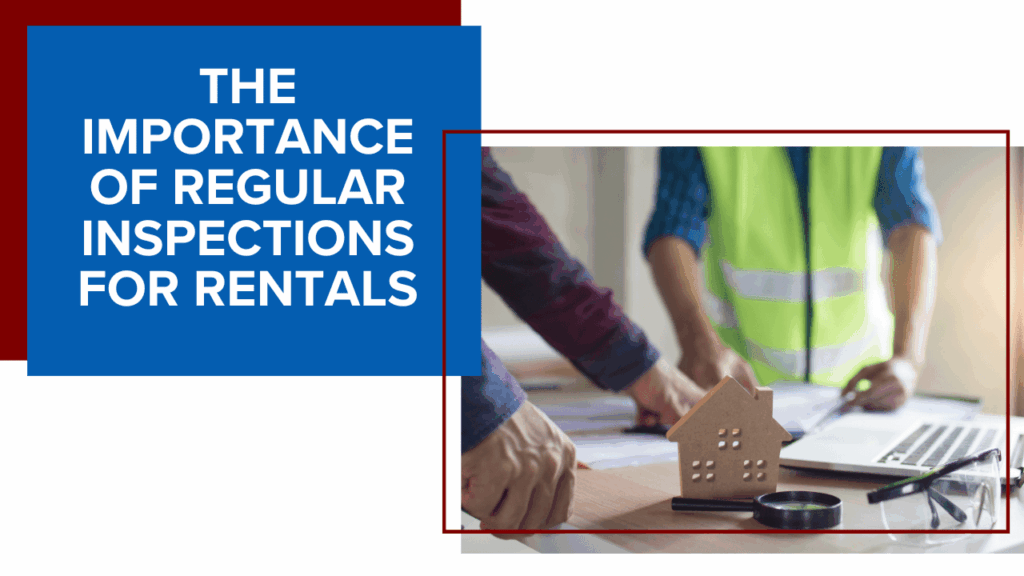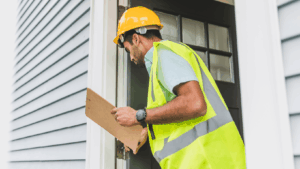
As San Francisco property managers, we like to prioritize property inspections when we’re tasked with managing your investment. A lot of owners will ask us why that’s necessary.
If your property is new and in great condition, you might feel like there’s no reason to go walking around looking for problems. Perhaps you’re nervous about invading your tenant’s privacy by conducting an inspection while the property is occupied. Maybe you simply struggle to find the time to perform those inspections or you’re not exactly sure what you’re looking for once you’re inside.
Regular property inspections for your San Francisco rental home are crucial. This is true even if you haven’t had a single maintenance issue or a request from your tenant. You still want the peace of mind that everything looks good inside your investment property.
The necessity of move-in and move-out inspections are fairly obvious. You know you need to effectively document the condition of your property before the tenancy and after the tenancy. But, you may not know why regular property inspections are important outside of those two periods. We’re here to help you get some clarity on why they’re so essential and how you should handle them.
Regular Inspections and Avoiding Emergency and Deferred Maintenance
Preventive and routine maintenance will reduce the risk of emergency maintenance. Inspections help you to identify small issues that could potentially become larger and more complex. This is why we like to train our tenants to make timely maintenance requests. Deferred maintenance is always more expensive than preventative or routine repairs.
Your routine inspections will give you the opportunity to check out some of the most used and easily broken systems and functions in your rental property. Regular inspections allow you to check for:
- Leaks. Plumbing issues and water problems are especially damaging to a property. Check under sinks and behind toilets for any moisture or dripping.
- Functional and secure locks on the doors and windows.
- Seasonal issues that may impact your gutters, irrigation, or walkways and driveways.
- Efficiency with your HVAC system. Always make sure the filters are being changed on schedule.
- Appliance functionality. Make sure the electrical outlets work.
If there are any indications that work needs to be done, make a note of it and get the repair scheduled as soon as possible. Your inspection is preventing emergency maintenance later on and protecting you against the cost of deferred and unreported maintenance.
Inspections and Tenant Accountability
You’re not looking for a “gotcha” moment, but you do want to know that your tenant is taking good care of your property. Protecting the condition of your investment property is an important part of renting it out, and when you have tenants in place, it’s hard to know exactly what they’re doing in your home. If you’ve screened them well, there’s likely little to worry about. However, you want to be sure your tenants are following the terms of your lease agreement.
Most San Francisco lease agreements are pretty detailed when it comes to the responsibilities of your tenants and what you expect from them while they’re living in your property. There are cleaning standards and basic maintenance requirements. There’s also a list of what’s allowed and what’s prohibited. Inspections hold tenants accountable to that lease.
Regular inspections allow you to uncover any potential warning signs that the property isn’t being cleaned or maintained the way the lease requires. You might find insects in the kitchen or air filters that haven’t been changed since the tenants moved in.
Not only are you checking that the leasing standards are being met, you’re ensuring the lease terms are being satisfied. If you have a strict no-pet policy and there are dog bowls all over the floor, you may need to do some further investigating. If your lease prohibits changing the property but several walls are painted purple, you’re going to be glad you scheduled an inspection.
You have to respect your tenant’s time and privacy. California and San Francisco rental laws do not allow you to show up for no reason to take a look around. Schedule your maintenance inspection ahead of time. Be fair to your residents.
Increasing Tenant Retention and Avoiding Expensive Turnovers
Residents can benefit from these regular inspections, too, and they might even help you hang onto your best tenants.
With digital communication a preferred method of chatting for most tenants and landlords, having that one-on-one time with your tenants is rare. When you can get together to talk about your property, you’re presented with an opportunity to improve your relationship. This is a good time to check-in with residents and find out if they’re happy and if there’s anything that would improve their rental experience.
When you’re having a casual, in-person conversation, those tenants may be more likely to open up.
Periodic inspections ensure you’re providing a safe and habitable home. You can make sure all the major appliances are in safe, working order and you can be sure smoke alarms and carbon monoxide detectors are functional. Tenants are going to appreciate that.
We always recommend that owners and landlords prioritize tenant retention. When you offer an outstanding rental experience and keep your property well-maintained, you save money on vacancies and turnovers. You don’t have to worry about the cost or the stress that’s involved in finding a new tenant or putting new paint on the walls.
Regular property inspections open up the lines of communication between you and your tenant. It allows you to work together on maintaining your investment. Tenants who feel comfortable with their landlords are more likely to stay in place and renew their lease agreements. So, use these inspections as an opportunity to have a real conversation with your residents.
Scouting Improvement and Upgrade Ideas During San Francisco Rental Inspections
When you’re regularly inspecting your San Francisco rental property, you can make sure your home is competitive in a crowded and competitive housing market. If you’re renting out a fairly new property or you’ve had the same tenant in place for five years, you may not have had the opportunity to make many improvements and upgrades. You probably didn’t need to.
But, when you can get inside the property for a routine inspection every year, you can make a list of things you might want to improve upon. This can be as simple as fresh paint or a professional carpet cleaning. Maybe an appliance could use an upgrade. These updates and improvements can work as a way to incentivize a lease renewal or justify a rental increase.
Annual inspections also help you budget for these projects and upgrades sooner than they’ll be needed. You can plan to make these upgrades at lease renewal time.
When Should You Conduct Regular Rental Property Inspections?
 Always conduct a move-in inspection before your tenants receive the keys and take possession of the property. You’ll use that inspection to document the condition of the property and make sure it’s ready for occupancy. Take photos, make notes, and create videos. After tenants have moved in, give them the opportunity to make any notes of their own on the condition report.
Always conduct a move-in inspection before your tenants receive the keys and take possession of the property. You’ll use that inspection to document the condition of the property and make sure it’s ready for occupancy. Take photos, make notes, and create videos. After tenants have moved in, give them the opportunity to make any notes of their own on the condition report.
You must also conduct a thorough move-out inspection at the end of the lease term, after the tenants have moved out. You’ll be just as thorough as you were during the move-in inspection, and you’ll compare the condition of the home at the end of the lease to its condition at the beginning.
Remember that you’re legally required to offer your tenants a pre-move out inspection as well. This can actually be good for both of you. Tenants will see where potential security deposit deductions may be lurking, and you can get an idea of how much work will be necessary in order to turn the property over.
For routine annual maintenance inspections, you’ll either want to inspect halfway through the lease period or a few months after the tenant has moved in. Provide notice and give your tenants an indication of how long you’ll be at the property. When they know what to expect, they’re more likely to welcome you.
We know that some owners and even some property managers want to do frequent inspections, maybe even as frequent as every month. We understand that you want to keep an eye on your property, but visiting that frequently can be disruptive to your tenants. Remember that while you own the house, this is their home. They don’t want you showing up every month, demanding to take a look around.
Annual routine inspections are a good starting point. The tenants will know they are coming, and you won’t be disturbing them with monthly visits.
We take our inspections seriously and we provide our owners a complete inspection report, with photos and recommendations. Most of the property investors we work with find this to be a beneficial resource, especially when they’re thinking about lease renewals, upgrades, and maximizing the ROI they earn on their rental homes.
Let’s talk more about inspections and how your San Francisco investment can benefit from them. Contact our team at Sharevest Property Management.